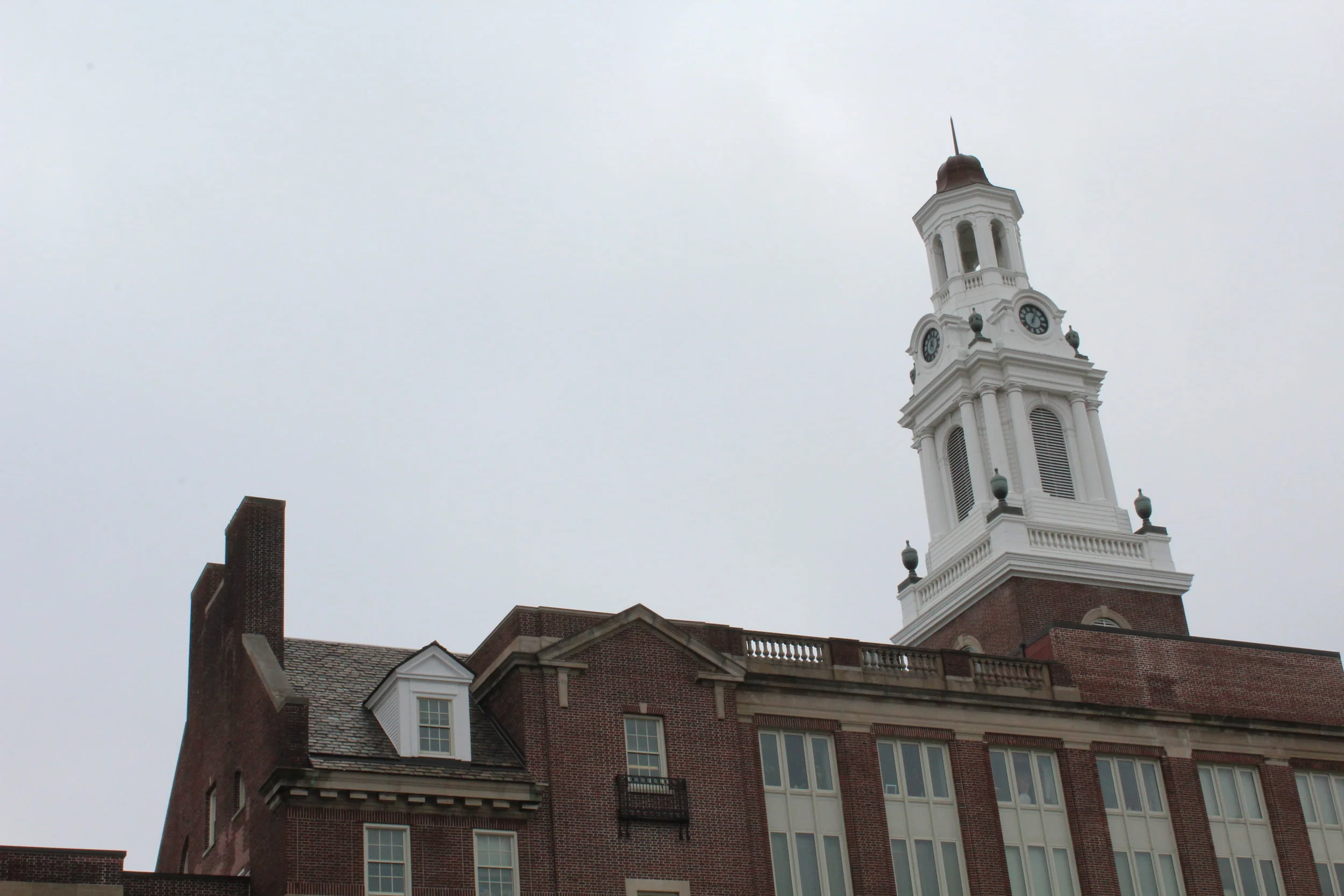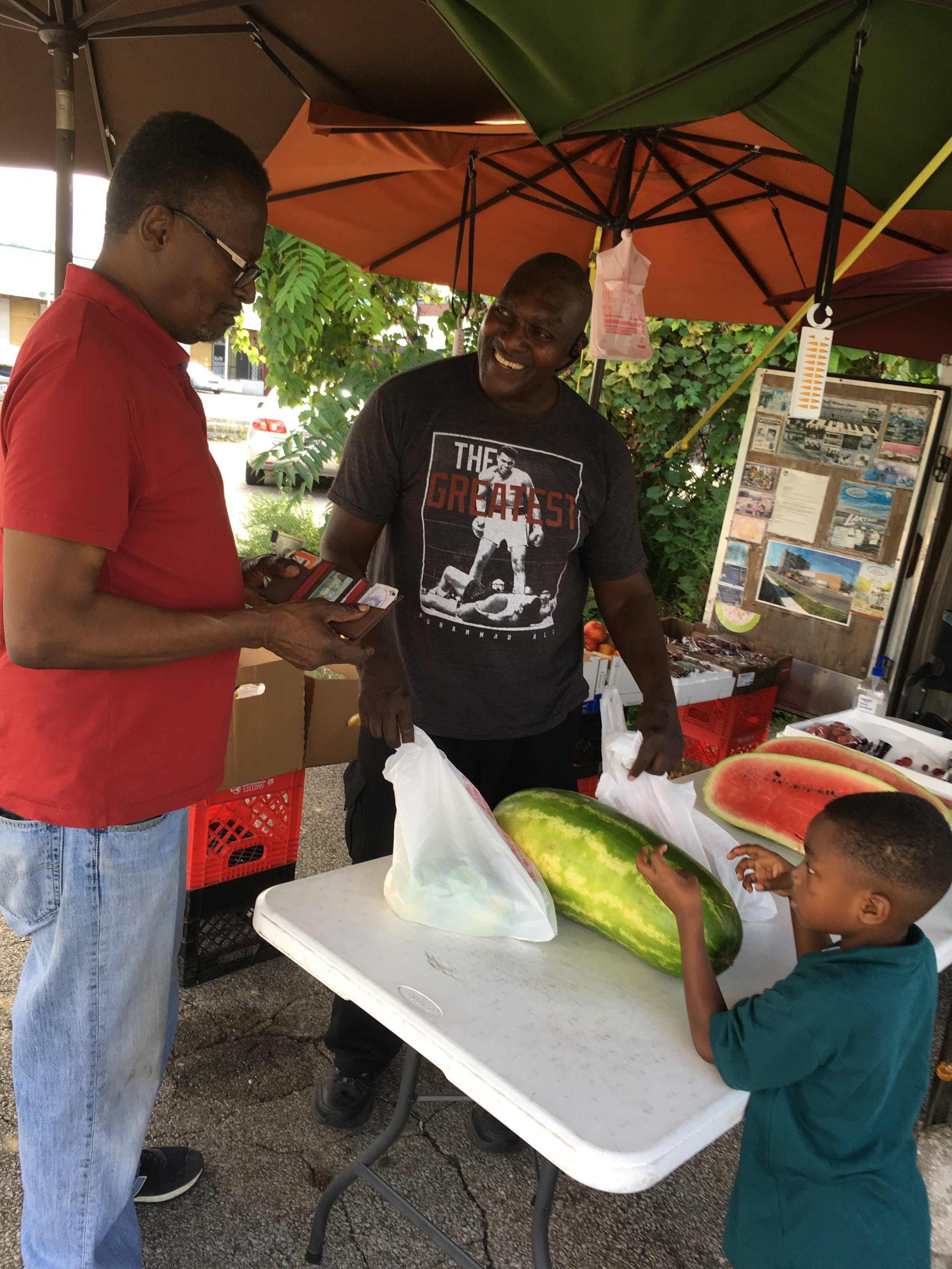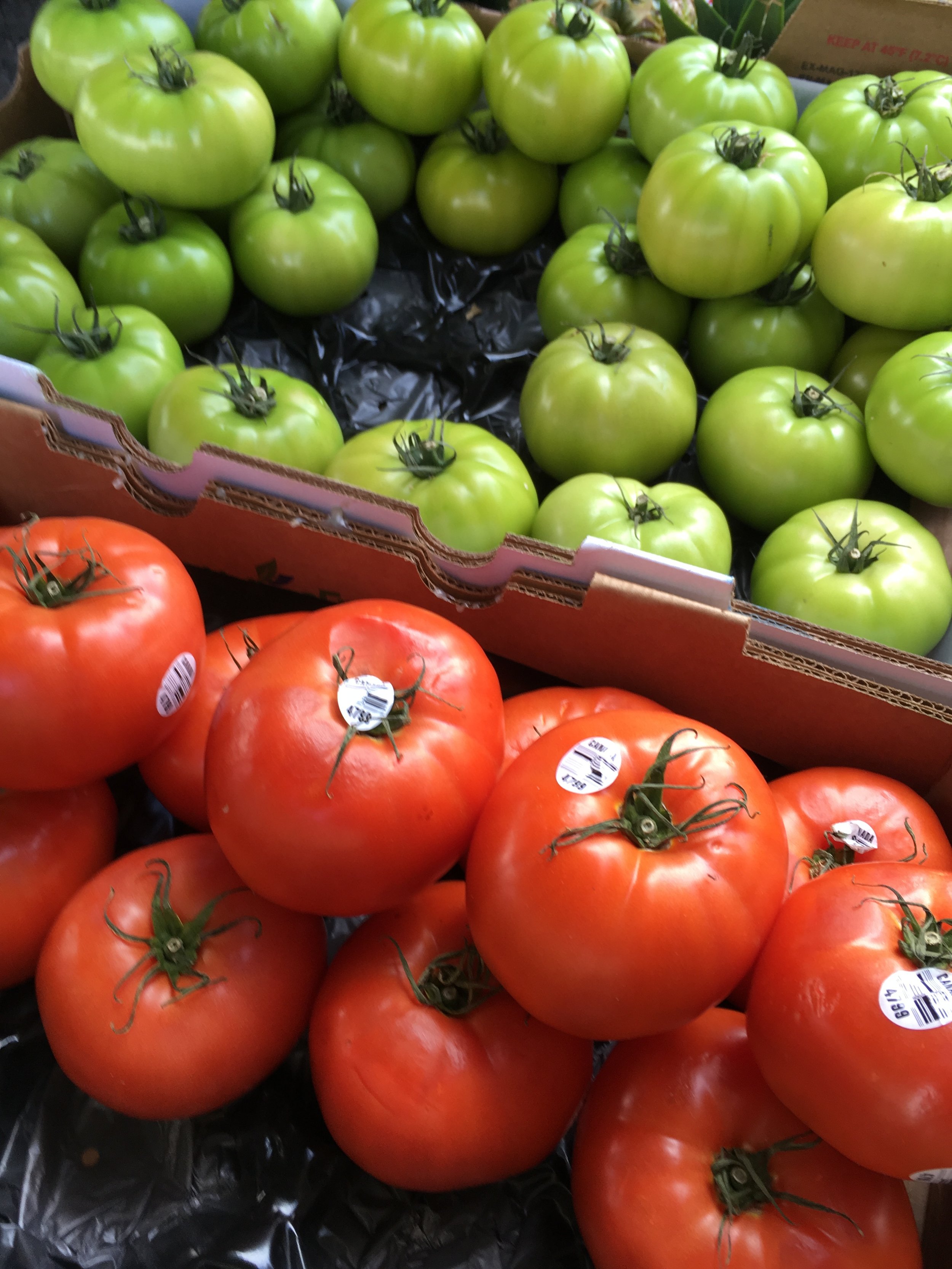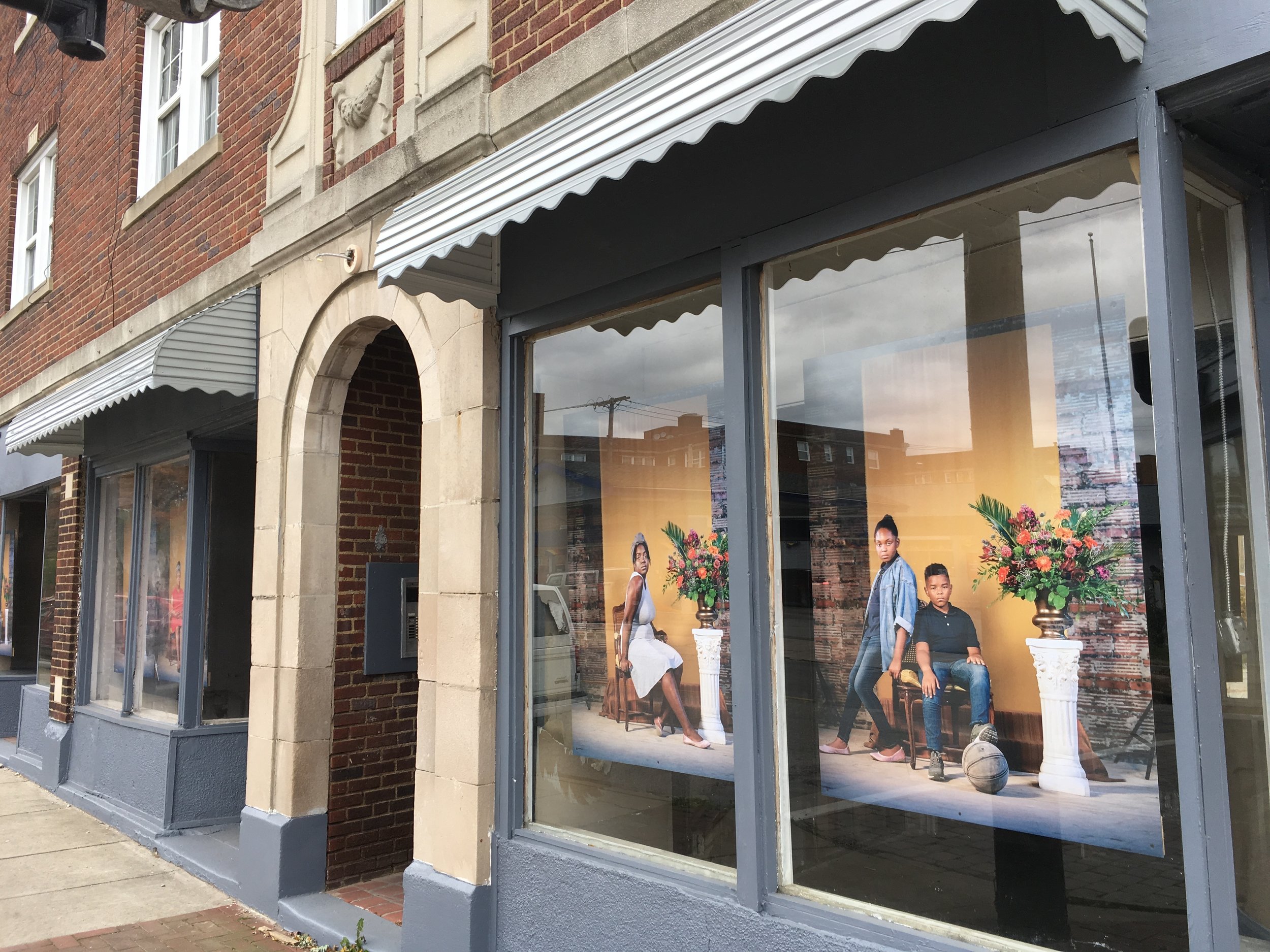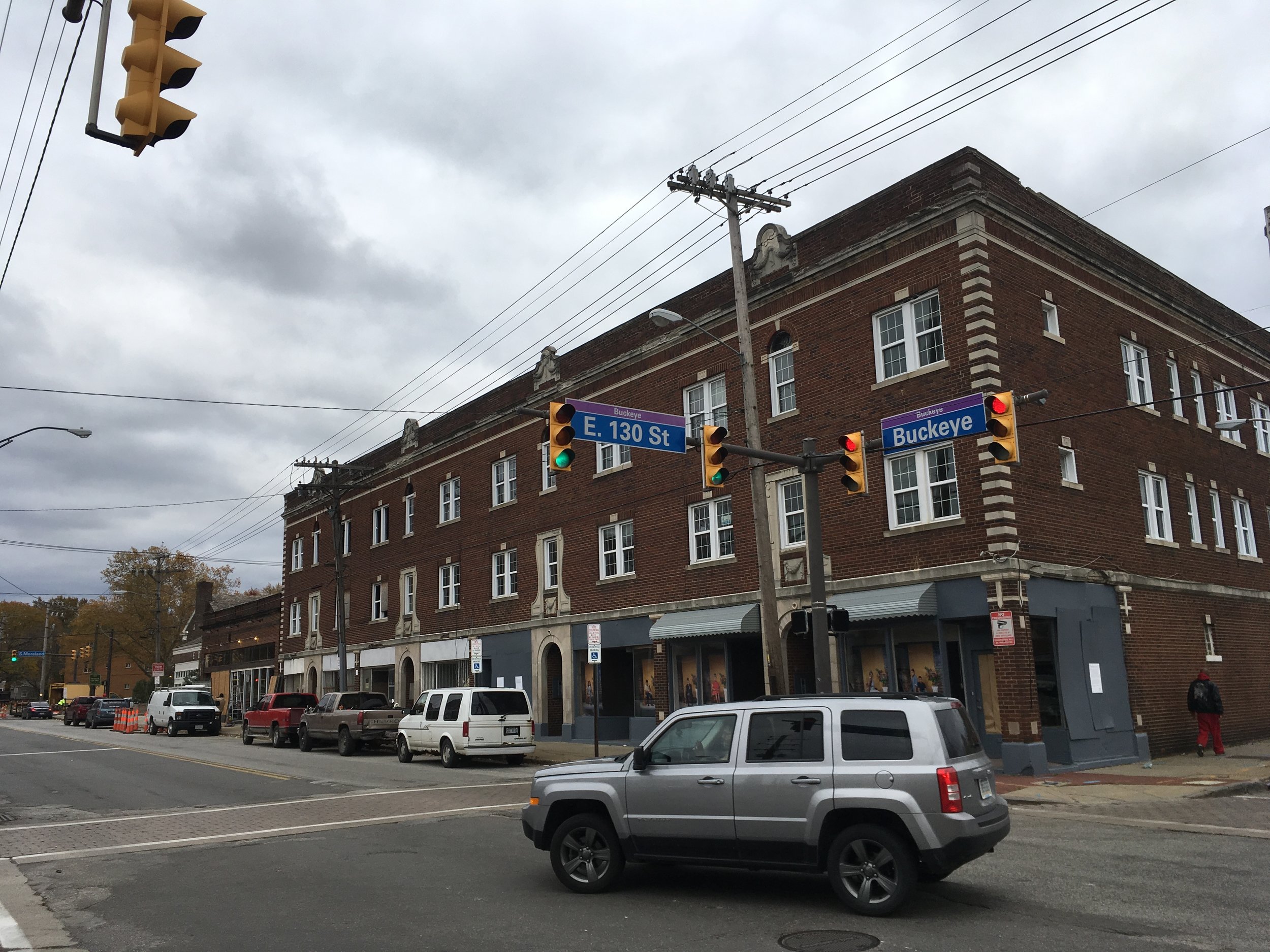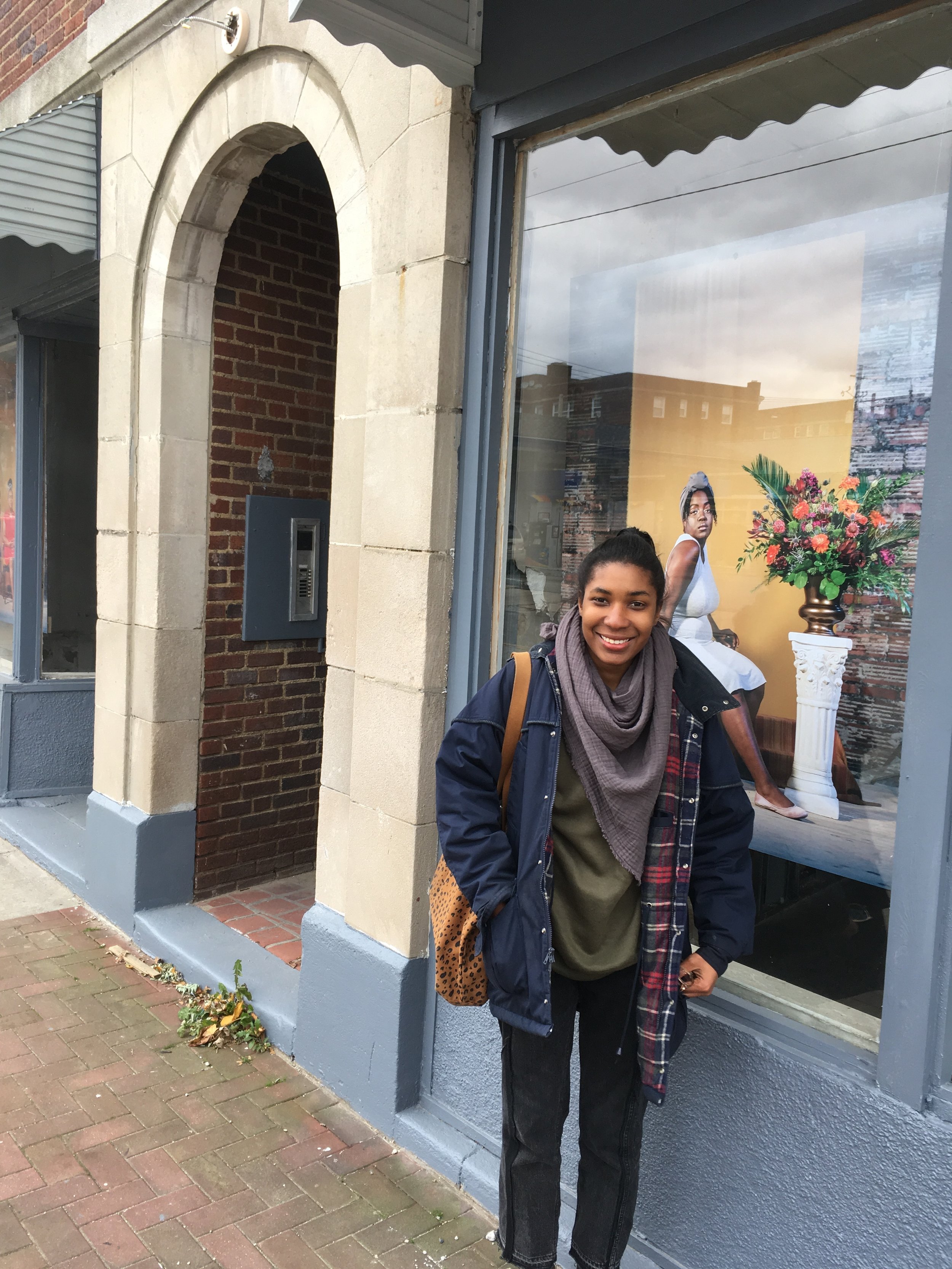Our conversation continues with Tiffany Graham and David Wilson of LAND Studio and Wayne Mortensen of Cleveland Neighborhood Progress. Plus, we discuss clips from speakers at public meetings who feel passionately about what should — and shouldn’t — happen in Shaker Square’s future, including the possibility of closing Shaker Boulevard through the Square.
This Is Shaker Square Episode 5: The Future (Part 1)
What’s the future of Shaker Square? Join planners Tiffany Graham and David Wilson of LAND Studio and Wayne Mortensen of Cleveland Neighborhood Progress as they talk about the process that’s shaping what will happen here in the future — including ideas to make the Square greener and more park-like. Can a place that’s separated both people and neighborhoods now unite them?
This Is Shaker Square Episode 4: The Present
On this episode, we move from Shaker Square’s past… to its present. We hear from the Square’s current owner, Peter Rubin of The Coral Company, about why the Square is 100% leased for the first time in 15 years — and about what’s still not working on the Square. Also, Donita Anderson of the ever-popular North Union Farmers Market; Joe Dawson and Brandon Chrostowski of Edwins Restaurant and Leadership Institute; patrons at Dewey’s Coffee Shop; and Cleveland Police Fourth District Commander Brandon Kutz.
This Is Shaker Square Episode 3: Movers
As Shaker Square opens, the 1929 stock market crash threatens its future. Then, starting in the 1950s, social changes in the neighborhoods around the Square alter who feels “welcome” there - an evolution that is still unfolding. A developer reflects on his late-1990s attempt to remake the Square as a high-end lifestyle center. Features interviews with Ludlow residents Sylvia Clayton and Shelley Stokes Hammond; Ulysses Glen, owner of the East Side Daily News; and developer Randy Ruttenberg of Fairmount Properties.
This Is Shaker Square Episode 2: Builders
On this episode, the mysterious Van Sweringen brothers, builders of Shaker Square and Shaker Heights. Who were these self-made rich guys who never married and hated “girl food”? What were their goals for Shaker Square? Plus, architectural designer Ben Herring helps us unpack an early planning document about the Square.
This Is Shaker Square Bonus: Brian Redmond
Unedited interview with Dr. Brian Redmond of the Cleveland Museum of Natural History about native settlement in what’s now Northeast Ohio.
This Is Shaker Square Episode 1: Believers
Inhabited by people for more than 13,000 years, the area that’s now Shaker Square has a strong heritage of attracting believers and dreamers. This episode explores native settlement up through the arrival (and eventual abandonment) of the area by the Shaker religious sect, which embraced celibacy and racial and gender equality. Features interviews with Dr. Brian Redmond of the Cleveland Museum of Natural History and Dr. Ware Petznick of the Shaker Historical Society.
2.13: Colorful Corners
Cleveland has more than 2,200 streets, which means it has many times that number of street corners. We pass dozens of them every day, maybe hundreds, on our way to work, or school, or to run errands. Most of the time, we don’t really notice much about them. But sometimes, something really special is happening at a place where two streets intersect.
That’s what this episode is about: A couple of intersections on Cleveland’s Southeast side that rise above the hundreds of others around them because they invite people to become participants rather than just passers-by — to interact instead of just intersect.
_________________
Joe Lynch, E. 93rd & Kinsman
‘When You Sell Good Stuff, People Love Good Stuff’
First up, East 93rd and Kinsman Avenue. Driving or walking toward this corner on a Thursday or a Saturday morning, you’d think at first you’re coming up on just another busy, traffic-choked intersection. Gas station on one corner, strip mall on another. Grey concrete and asphalt all around.
Then your eyes get pulled toward something way different. About a half dozen lawn umbrellas seem to sprout from the ground. But underneath them is where the real treasure begins. Tray after tray of fresh fruit and vegetables for sale — and not just any fruit and vegetables, but the most beautiful specimens you could possible find of each. As if peach, each red pepper and tomato, has been individually curated and displayed.
And it turns out — they have been. The man responsible is named Joe Lynch.
Joe Lynch: My name is Joe Lynch. I'm in the produce business.
We are on 93rd and Kinsman, where I have been selling my produce for the past 12 years.
I started off just selling watermelons and going door to door. And over the years some of my customers asked me about different fruits and vegetables, and I was able to find the location where I could get all the produce that everybody was requesting.
You’re looking at green seedless grapes, black seedless grapes, fresh pineapples, fresh green tomatoes. Everybody loves fried green tomatoes.
I go and pick my own produce at the Ohio Food Terminal, over on Woodland and 47th I believe. I have to re-up every morning. I always go there first. You know, I’m up 3:30 in the morning, man, to beat the traffic, and that's six days a week.
I come here twice a week, which is Thursday and Saturday, and I'm also in Akron on Fridays and Sunday, and I’m in Lorain County which is where I live.
I bought my truck, man, it had six miles on there. I got a 104,000 miles on my truck right now! (laughs)
In all my locations, you have to be at a busy intersection where there’s constantly traffic flow. And when you got constant traffic flow, people recognize it, people notice. I’ve seen people drive by, man, and they’re taking pictures with a camera. You know, with their phone. I mean, I see it all the time. I guess this setup is amazing to them.
A customer approaches.
Customer: I came by here one time, i think you were closing up and you were nice enough to ‘Hey, here, take it. You said, ‘Here take this with you.’ So I swore to myself that I was gonna come back and spend some money with you.
Joe: I sure do appreciate you, sir. I appreciate you.
There's some good people in this neighborhood, man. A lot of people have told me this is a bad area, but I I don't see that. I mean, it may have been at one time, but since I've been here, there’s some good peoples in this neighborhood man.
Selling produce, man… It means a lot to me. I'm just thankful and blessed that I'm able to sell fresh produce man to people that don't get fresh produce.
Some days man, I make little money. I make less money some days than I spend out. But I mean if I only make a dollar more than what I had, I’m blessed.
My name is Joe Lynch, and I sell fresh fruits and vegetables.
You sell good stuff, people love good stuff. You know what I’m saying?
_________________
Amanda King, E. 130th St. & Buckeye
‘We’re Striving for Transcendence’
A little further east, I meet artist and activist Amanda King at the corner of East 130th and Buckeye Road. What really grabs your attention when you’re walking or driving past this corner are the giant, color photographs inside six of the storefront windows. They’re portraits of neighborhood residents that Amanda King shot for a project called “The Marigolds.” It’s part of a wider effort to bring public art to the Buckeye neighborhood organized by the nonprofit LAND Studio.
Amanda King: You're standing in front of 13000 Buckeye Road, which is a historic storefront on the corner of 130th and Buckeye. In these six feet tall windows, there are six portraits that take up the majority of the window. The portraits are color, they're shot with a medium format camera on color film.
We decided that it would be much more uniform if everyone just sat in a chair next to a Florentine column with an urn of marigold flowers. The marigold flowers, we referenced Toni Morrison's The Bluest Eye, which I've read over several times in my lifetime because The Bluest Eye is one of my favorite books.
In the novel, Morrison says, the land was hostile to marigolds that year and certain flowers do not grow in the environments we create. I really thought that that was a symbol of black folk in America, that many environments across the country are volatile for us and growth and prosperity and opportunity is not here for us.
The marigolds really focuses on the juxtaposition between the fragility and the resilience and that's the moment where we are right now. Right now as black people, we’re very fragile, but we're fighting.
I did not grow up in Cleveland. I grew up in Pittsburgh, Pennsylvania. I ended up graduating from Bryn Mawr college where I majored in art history. I went to New York City and worked for a fashion editorial publications and what, as an editorial assistant. So I was working on photo shoots with top models, the top actors, the top editors at the time.
My favorite person to work with or to see was Naomi Campbell. There was also Nicki Minaj, there's The Killers, it's like a rock band.
And so during my time in New York I would be working for fashion publications in the day. And then on the weekends usually there weren't shoots. So I'd be out canvassing for Barack Obama, he was going into his second term. And around that time Trayvon Martin was killed and that completely shifted my whole perspective on everything. And so I decided that, you know, it's really cool to work for W and International Vogue and Interview magazine, but that really wasn't serving me as a woman of color.
Like, when my people are out here dying and being killed, like it's my role to use my creativity and to use the artistic skills that I have to uplift them. So instead of selling luxury, I wanted to tell the truth and I wanted to create ideas of liberation.
So I decided to go to law school to study copyright law. I came to Cleveland in 2014 for law school. I was accepted at Case Western Reserve University School of Law.
But when I came to Cleveland, on the first day of my orientation, Michael Brown was killed out in Ferguson, Missouri. And then in November Tanisha Anderson was killed by the police and Tamir Rice was killed by the police. And so in a span of four years, you have a crazy amount of police killings of unarmed black folk. And so my law school journey was more focused on civil rights and police accountability. And I decided to pick up the camera again actually as a way to get black youth involved in police reform.
In 2016, I started a program called Shooting Without Bullets, which I still run to this day.
Shooting Without Bullets, it's really simple. We shoot through photography and not with guns or anything violent. We are aggressive in our art making, we’re aggressive in our perspectives and getting them out there, but certainly it is a message of love and peace. What we're fighting for is simply, fundamentally the right to exist. But ultimately we're striving for transcendence. To transcend the current state in which black folks are in, in America, into something that is greater, into something that truly keeps us safe, that truly keeps us prosperous.
Cleveland is one of the most pivotal places for this effort. A lot of people look to other cities. LA, Ferguson, Baltimore, New York, and right here is where the real tension is. There isn't a lot of economic opportunity. There isn't a lot of celebrity culture and it's really the people who are pushing against power. We are one of those cities that is a battleground for civil rights. And it can go either way. And so Cleveland has to take that power that the world is, and the United States is, looking at us as a place where change can happen - or where we know change is not going to happen.
My name is Amanda King and I’m an artist and activist living in Cleveland, Ohio.
___________________
Amanda King’s “The Marigolds” is on view, anytime, in the storefront windows at East 130th Street and Buckeye Road. You can check out more of her projects on her website. The song you heard in that piece is called “WAKE UP.,” written and performed by Cleveland hip-hop artists Aphiniti and JB as part of an effort to get black youth more involved in the 2018 midterm elections and beyond. Amanda King helped organize the effort and art-directed the video for the song.

